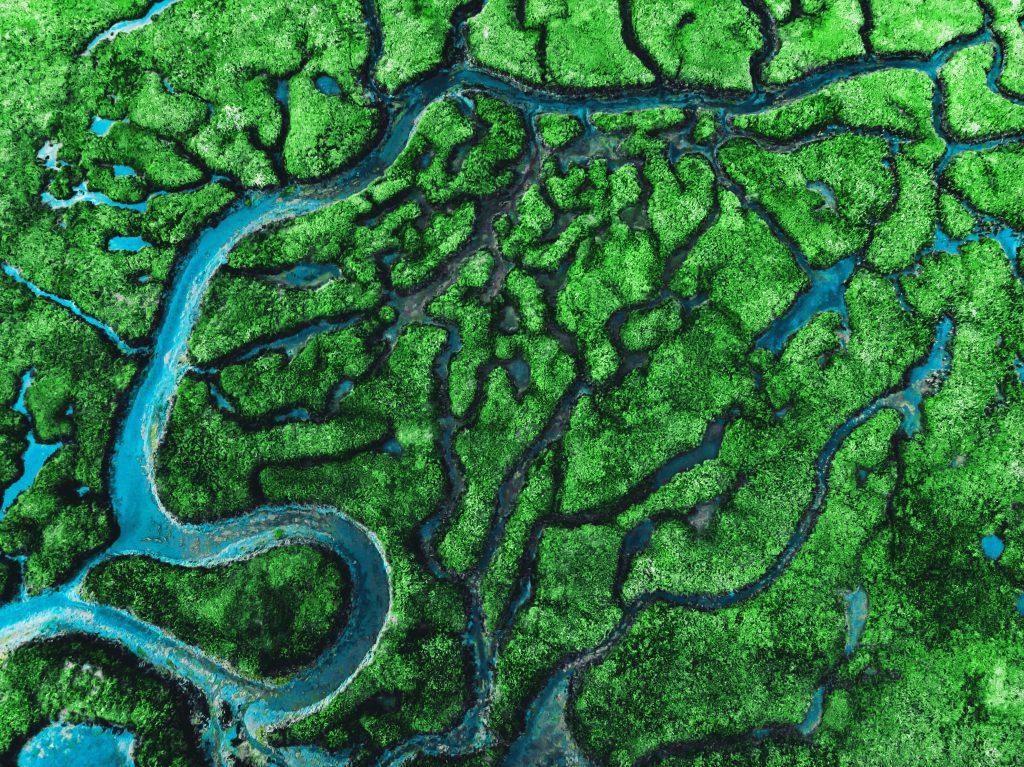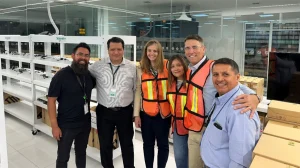Humanity’s relationship with water is evolving quickly. Once perceived by some as an abundant, naturally renewing resource available for free use, water has now become a precious and increasingly endangered asset. As populations grow and industrialization expands, the staggering demand for water resources and the consequences of pollution and climate change are becoming more evident. Today, we recognize clean water as a finite resource that needs sustainable management. But this poses a trilemma for water management. We must ensure universal access to clean water, which requires building new infrastructure. At the same time, we need to maintain the environmental sustainability of water resources and negate the carbon impact of this new infrastructure to keep water services affordable.

Solving this global water scarcity problem will require transformative strategies integrating advanced digital technologies with a circular economy approach.
To be blunt, we need dramatic change, not just incremental change. Yesterday’s methods will not get us anywhere near where we must be tomorrow. Addressing these three interconnected challenges today will significantly contribute to developing the resilient and efficient water management systems we require in the future.
As water scarcity increases, water management facilities face a trilemma. They must ensure universal access to clean water while maintaining the environmental sustainability of water resources and keeping water services affordable.
Tackling inequality, sustainability, and affordability in water management
Water is a necessity—there is no way around that fact—and it is crucial for global stability and human well-being. However, access to clean freshwater is diminishing for many communities, and how we currently approach water management is often unsustainable. Improving both requires significant investments, but these are not investments that are easily passed onto the consumer.
According to UNESCO, we are at imminent risk of a global water crisis. Approximately 2 billion people worldwide lack access to safe water (26% of the global population). In addition, nearly half the global population struggles to afford essential water services. Rising costs, climate change, and political disruptions affect the process of maintaining or updating infrastructure. A lack of sustainable practices makes it challenging to keep water affordable without sacrificing service quality. This severe inequality in water distribution and reliability underscores the need and urgency to implement equitable water management.
At the same time, the water sector accounts for about 4% of global electricity usage. This energy use, along with the direct emissions from wastewater treatment processes such as methane and nitrous oxide, significantly impacts greenhouse gas emissions, exacerbating the effects of climate change. More alarming is that this energy consumption and direct emissions are projected to increase by over 30% by 2040 due to rising demands and the impacts of climate change.
It’s clear that more efficient practices and renewable energy integration are essential to reducing the carbon footprint of water management. Energy reduction and direct emissions have a complex relationship. Focusing on one can increase the other, so we need to build smarter, more holistic processes, which can only be achieved through a more digital approach.
A digital approach to transform water infrastructure and improve water access
Traditional, proprietary automation solutions in water infrastructure undergo major upgrades every 10 to 20 years. This process is slow, and this approach no longer aligns with today’s world. It’s challenging to anticipate technological requirements even three years into the future, so we must look for long-term alternative solutions.
The answer lies in a resilient, future-proof digital approach. By separating the software upgrade cycle from the hardware upgrade cycle, we can create and implement the new applications we need, as we need them. With flexible, software-driven solutions, our water infrastructure can be designed to last and continuously adapt over a century. These digital solutions allow for the continuous adaptation and improvement of water infrastructure beyond past constraints of decades-long upgrade cycles.
Digitization and digitalization, while often used interchangeably, serve distinct roles. Digitization—converting data to digital form from innovative, IoT-connected products—leads to digitalization, a profound transformation of business operations where digitized data and technology create new opportunities. In tackling the water trilemma, digitalization integrates real-time data, advanced analytics, and interconnected technologies to business processes. – enhancing and augmenting our water operations teams. This leads to more efficient resource use, improved water access, and cost management. This shift goes beyond upgrades, embodying a strategic evolution towards sustainable, accessible, and affordable water management systems.
Navigating water scarcity with next-gen technology
Innovative approaches to the water scarcity problem leverage digitalization to achieve sustainability goals, improve access to water, and manage affordability without compromising performance and security. It can be realized through:
- Universal automation: this game-changing innovation moves infrastructure away from locked-in, hardware-specific legacy systems to a more open and flexible structure, like how modern smartphones operate with app stores. Universal automation allows water management systems to adopt new functionalities and improve performance without the constraints of proprietary hardware-dependent software upgrades. One report found that it saved 68% in engineering hours, allowing the focus to be on process improvement, not just the enabler..
- Digital twins: these transformative tools provide a consistent digital thread across the entire water infrastructure lifecycle. Digital twins help eliminate repeated data entry and the potential for errors. They also streamline processes and improve a water system’s efficiency and sustainability by allowing for real-time adjustments and predictive maintenance. This provides a ‘single source of truth’ that users can utilize from design to operation. Digital twins can also reduce energy use by up to 30% and reduce operational costs by up to 25%.
- Cyber resilience: water is considered one of the top concerns of the 16 lifeline infrastructures in our societies. Secure, flexible, and responsive systems are essential. By prioritizing resilience, the water industry can build systems that quickly adapt and recover from cyber incidents. In a world where infrastructure interconnects and faces digital threats, this relevance is steadily increasing.
Circular ecosystems: from wastewater to resource
We only reuse 11% of our wastewater, with about half of the remainder re-entering our water supplies. Wastewater alone accounts for about 1.5% of global emissions. Embracing a circular water ecosystem is crucial, as it enables us to recycle water instead of discarding it, thereby reducing our reliance on fresh water and mitigating pollution.
The adoption of a circular water economy holds immense potential. It can transform waste into valuable resources, extracting energy, nutrients, and metals from wastewater. This addresses water shortages and safeguards the environment for future generations. Digital approaches further enhance these circular systems, demonstrated in industries like mining. Companies such as Rio Tinto are leveraging data-driven asset management to boost efficiency and transparency, with a goal of reducing absolute emissions by 45%.
Circular principles also take root in the water sector. Aquapolo, one of Brazil’s leading water reuse initiatives, provides industrial water reuse solutions. Every liter of recycled water produced saves a liter of drinking water. This project is a significant example in the Southern Hemisphere, promoting sustainable water management practices.
Our vision for a smarter water future
Tackling the growing challenges with our world’s water requires fresh, creative solutions. Schneider Electric is an innovation leader in the water management sector. We are recognized for our expertise in intelligent monitoring, energy efficiency, and advanced analytics. We combine our expertise in energy management and automation of water processes to optimize water processes, reduce costs, and improve system reliability.
Our commitment to sustainability and technological innovation makes us an essential advisor for companies looking to enhance water management practices and align with global efforts towards more intelligent, more resilient water infrastructure. To dive deeper into our approach to solving water scarcity, explore water and wastewater solutions, and discover our water industry success stories.




Add a comment